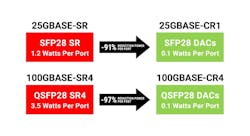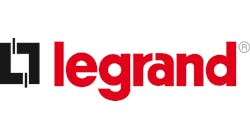High-Speed DACs: A Viable Option for Next Generation 5G Open RAN and Open Edge Connections
That’s not surprising when you consider that 5G mobile broadband aims to connect one million devices for every square kilometer (0.386 square miles) according to 3GPP specifications. At the same time, Ericsson’s Mobility report predicts that this year’s expectation will reach a monthly average of 19 gigabytes per device. The report also predicts that this year’s total mobile traffic will reach 110 exabytes per month. That’s 110 billion gigabytes! Cellular service providers have set high expectations for super-fast response times and access to unlimited data anywhere to achieve the best customer experience. In response, telecommunication networking has evolved to sophisticated virtualized radio systems supported by a large ecosystem of open solution options. Telecommunication end users and hardware suppliers collaborating on open standards with a shared goal to make more device connections possible. As the need for more radios continues to grow, Open Radio Access Network (O-RAN) standards become more popular. With its ability to connect legacy radio systems O-RAN is getting a lot of attention and many cellular providers are shifting to open radio access network concept as they roll out 5G and set the stage for future “G” deployments across the globe.
Utilizing innovative open source designs with non-proprietary, commercial off-the-shelf (COTS) hardware and ethernet industry standards, open radio access networking helps connect more. O-RAN offers easy integration and scalability of disaggregated network designs with interoperable functionality offering the benefit of lower costs, improved innovation, and more opportunity for private and neutral host cellular networks. When we get into the nitty-gritty of the building blocks that comprise an O-RAN architecture—radio units (RUs), distributed units (DUs), centralized units (CUs), Cell Site Gateways and RAN intelligent controllers (RICs) can be deployed with short and long reach network connections anywhere and everywhere. As with any high-bandwidth low-latency transmission requirement, the physical layer connection performance matters. This is especially the case in fronthaul links between RUs and the DUs where new eCPRI and radio over Ethernet (RoE) protocols are providing efficient, flexible Ethernet-based transmission and where a maximum latency of only 100 microseconds (ms) is the target. As rollouts continue to scale latency, power and heat reliability is more critical than ever.
Deployment Location Flexibility
In an O-RAN architecture, previous proprietary remote radio head (RRH) and baseband units (BBUs) that handled the processing of uplink and downlink traffic are replaced by RUs, DUs, and CUs with open interfaces (often designated as O-RU, O-DU, and O-CU). DUs and CUs are typically deployed on servers, along with software-defined RICs for controlling and optimizing RAN functionality. The fronthaul portion of the network resides between the RUs that convert radio signals to digital and the DUs that are responsible for real-time physical layer transmission and intense digital processing. Midhaul refers to the portion of the network between the DUs and CUs that support higher-layer functions and transmit data over the backhaul to the core or cloud.
One of the benefits of O-RAN is flexibility in how the network is architected and where various building blocks are located. Cellular networks can be deployed as private networks and large service provider networks. In large scale macro O-RAN, service providers can use a centralized approach where they co-locate DUs and CUs at the far edge, or they can take a distributed approach and locate only CUs at an edge site and co-locate DUs with RUs at the cell site. They can even separately locate DUs at the far edge and place CUs in an edge or regional cloud data center or take the same approach as a traditional deployment and locate the RU, DU, and CU at the cell site. RICs are also found at the far edge, edge, or cell site, depending on the real-time nature of the applications.While there is a lot of flexibility with O-RAN, factors like future proof connectivity, latency, bandwidth requirements, power limitations and deployment cost come into play. Consolidating CUs in fewer central locations is the most cost-effective design. However, the latency and bandwidth requirements of fronthaul connections often call for collocating DUs with RUs at the cell site since the shorter distance helps minimize latency. The distance from the RU and DU to the CU is not as critical since the CU is not responsible for real-time functions.
As the fronthaul protocol shifts to Ethernet-based eCPRI and RoE, latency improves. A DU can connect to multiple RUs locations up to about 20 km—every additional km adds about 5 ms of latency. However, in the meantime, fronthaul gateways (FHGWs) enable O-RAN adoption by converting legacy CPRI-based interfaces into packetized Ethernet frames. These devices perform additional processing to adapt CPRI to Ethernet. In far edge data centers that house DU and FHGW clusters, switches connect DUs and provide fronthaul FHGW connections, providing more flexibility in allocating resources.
Physical Layer Considerations
As 5G continues to roll out, the dense cells and heavy traffic will require backhaul connections between CUs and the core to support hundreds of gigabits, service providers are a key driver in higher speed ethernet connections like 400G and beyond. While midhaul transmission speeds between the DU and CU will be in the range of 100 Gb/s. Fronthaul speeds between RUs and DUs (and FHGWs) commonly use transport rates of 10 or 25 Gb/s. Geographically separate RUs, DUs, and CUs require fiber optic cabling and transceivers to support these speeds over greater distances. For example, the 5G core could be up to 200 km from the CU, while the distance from the CU and DU can range from 20 to 80 km. But there is a more cost-effective choice for connections between these building blocks when they co-exist in the same location and for connections in CU and DU clusters.
For short-reach connections within an O-RAN, high-speed interconnect assemblies like passive QSFP28 direct attach cables (DACs) that support 100 Gb/s and SFP28 DACs that support 25 Gb/s provide the lowest-latency option. While these DACs are limited to distances of about 5 meters, they are ideal for in-cabinet direct connections, which are especially common at O-RAN cell sites and within the far-edge and edge data centers. Passive DACs also offer the lowest power consumption per port, ranging from 91% to 97% less power per port than fiber cabling with separate transceivers. This adds up quickly in volume short reach server network access connections.
A Closer Look at DACs
As service providers and private cellular networks continue to roll out 5G and migrate to an O-RAN architecture that provides significantly lower total cost of ownership and unlocks new opportunities, they would be wise to take a closer look at high-speed DAC’s. Today DAC’s are not widely used on short reach radio access networks. Using DAC for short reach high speed telecommunications connections can minimize total cost of operation, reduce latency, and improve energy performance. These benefits align with the top objectives for future G requirements highlighted in Ericsson Microwave Outlook. In the Data Center direct attach copper cables are widely used to support high volume mission critical deployments. This is because Networks Engineers know they can trust the consistent reliable characteristics of passive copper cables. But just like when selecting O-RAN’s open hardware vendors, they must ensure the same holds true for DAC manufactures. It’s essential to therefore select DACs from vendors that have tested their products for ethernet compatibility across various network equipment vendors backed by superior technical support and an agile supply chain to help ensure success and speed to market.
Ryan Harris is Sales Engineer and Market Manager for Siemon. As an industry leader in the manufacturing and innovation of high-quality, high-performance interconnect solutions, Siemon offers a comprehensive line of DACs for reliable, low-latency connections, along with a full line of active optical cables (AOCs) and fiber optic structured cabling for longer-distance O-RAN connections. Download their free application and product guide to learn more or contact their expert Data Center Design Services team.







